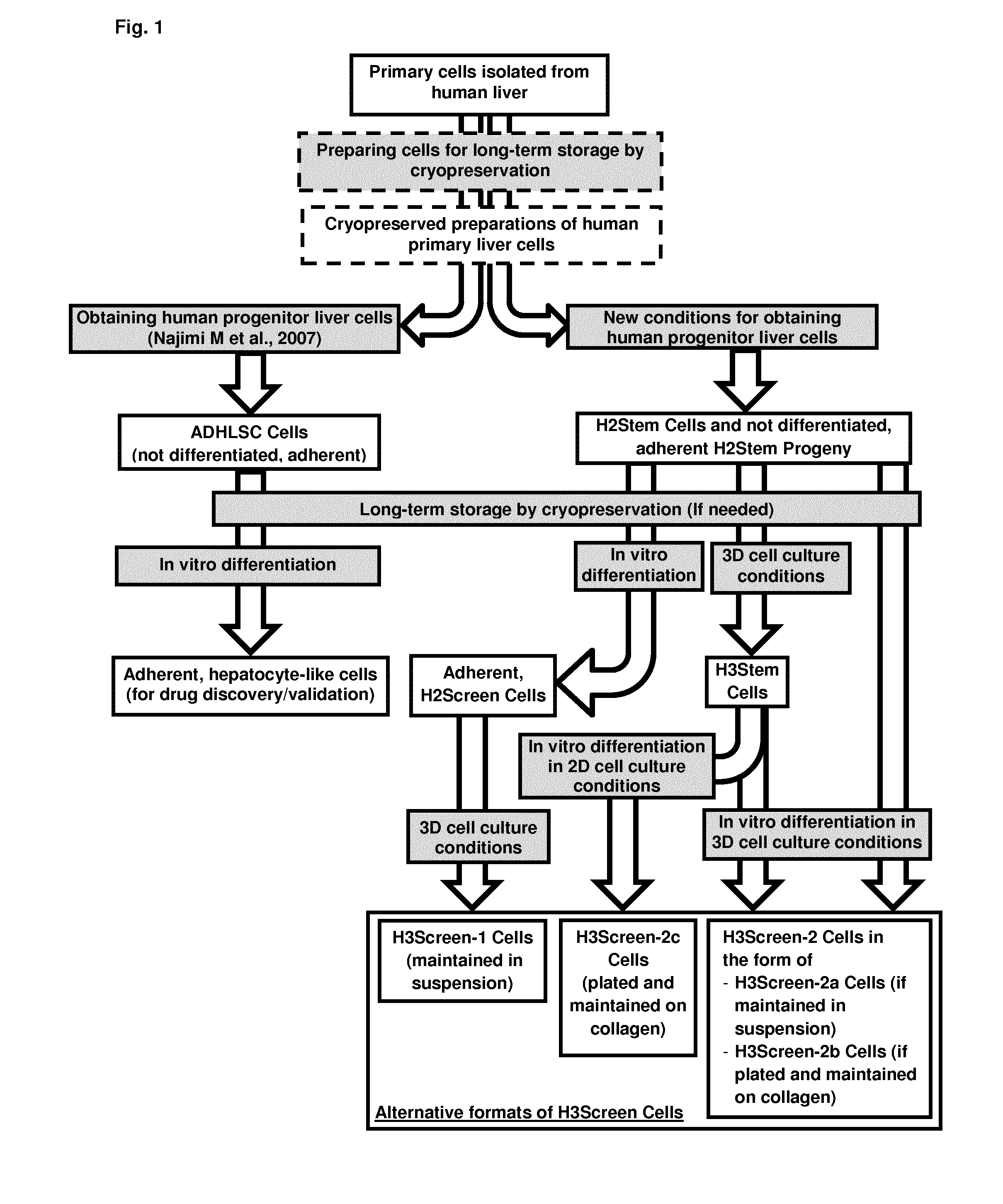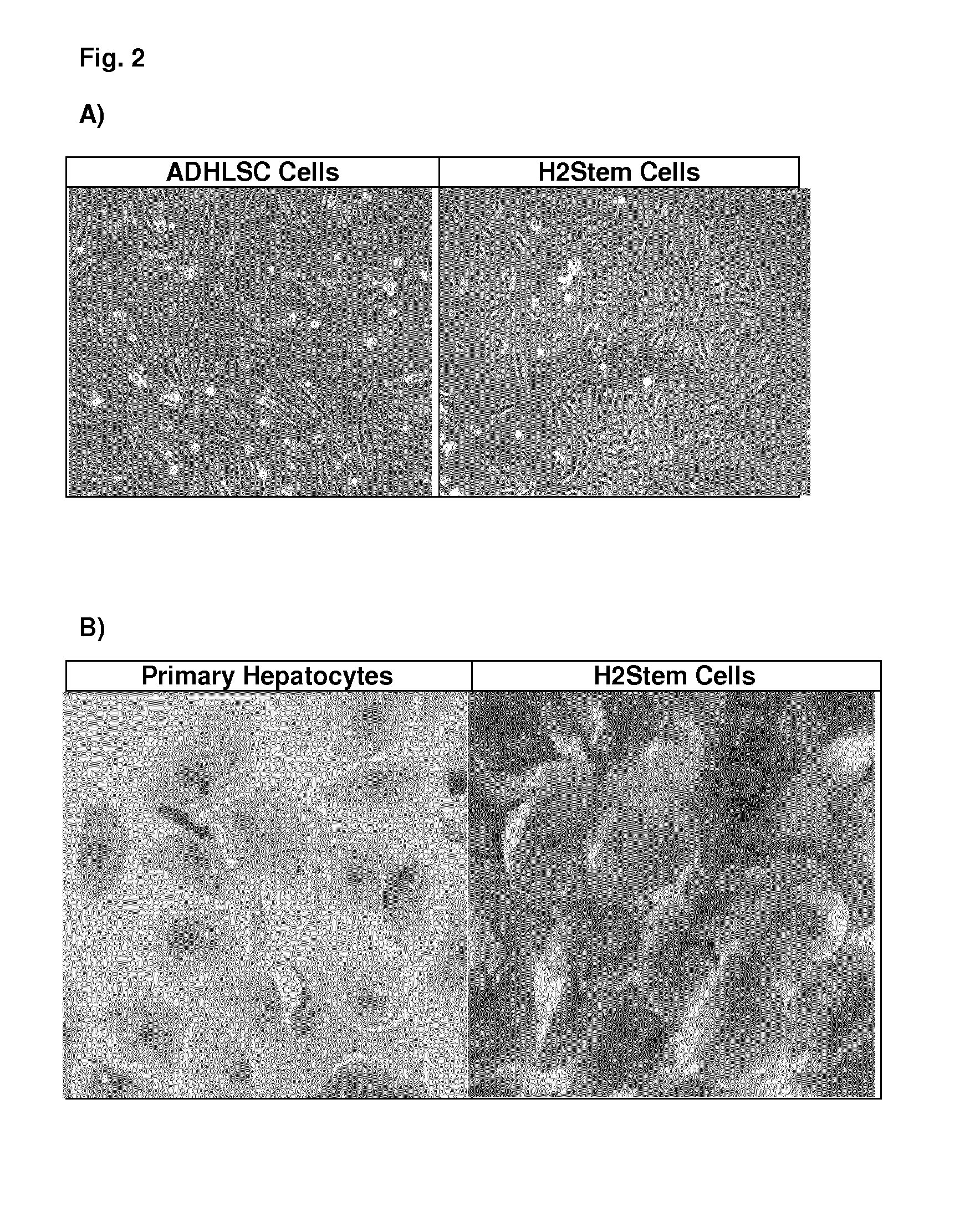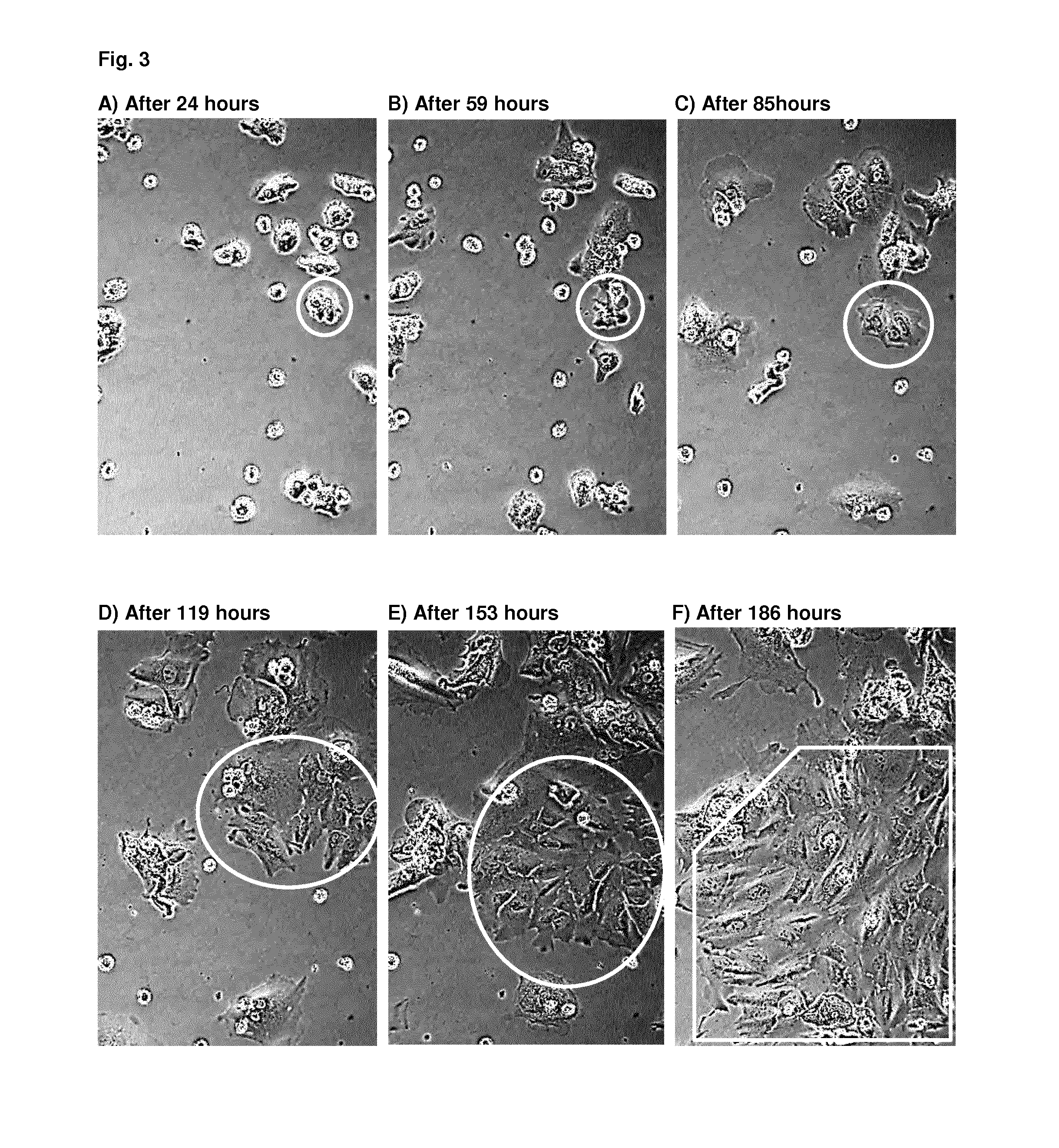Method for producing adult liver progenitor cells
- Summary
- Abstract
- Description
- Claims
- Application Information
AI Technical Summary
Benefits of technology
Problems solved by technology
Method used
Image
Examples
example 1
Preparation and Characterization of H2Stem Cells and H2Stem Cells Progeny from Primary Liver Tissues
Materials & Methods
Mediums and Other Materials for Cell Culture
[0192]The following materials were used: Williams' E medium (Cat. No. 22551022, Invitrogen), DMEM with high glucose concentration (4.5 g / l) and L-Glutamine (high glucose DMEM, Cat. No. 41965047, Invitrogen), IMDM (Cat. No. 21980032, Invitrogen), IMDM without phenol red (Cat. No. 21056023, Invitrogen), Hepatocyte culture medium (HCM; Cat. No CC-3198, Lonza), Fetal Bovine Serum (FBS; Cat. No. F7524, Sigma), recombinant human Epidermal Growth Factor (EGF; Cat. No. AF-100-15, Peprotech), recombinant human Hepatocyte Growth Factor (HGF; Cat. No. 100-39, Peprotech), recombinant human Oncostatin M (OSM; Cat. No. 300-10, Peprotech), recombinant human insulin (INS; Cat. No. H10219, Lilly), Insulin-Transferrin-Selenium-G Supplement (ITS; Cat. No. 41400045, Invitrogen), human albumin (50 g / L, Cat. No. 1501466 Baxter), heparin sodium ...
example 2
Generating Distinct Types of H2Stem Progeny as Three-Dimensional Cell Clusters
Materials & Methods
[0225]Generating H3Stem Cells from H2Stem Cells
[0226]H3Stem Cells are generated in Ultra-Low Attachment cell culture flasks by suspending about 1-10×106 H2Stem Cells in 15 ml medium before plating them on Ultra-Low Attachment cell culture flasks (75 cm2; cat. No. 3814; Corning).
[0227]H3Stem Cells are generated in the Ultra-Low Attachment 96-well microplates by suspending 5 000-20 000 H2Stem Cells in 0.1-0.2 ml medium and plated per well on Ultra-Low Attachment, U-shaped / round 96-well culture microplates (Cat. No. 7007; Corning). Alternatively, 75 000-100 000 H2Stem Cells are suspended in 2.0-3.0 ml medium and plated per well on Ultra-Low Attachment 6-well culture plates (cat. No. 3471; Corning).
[0228]Culture medium is by preference in Williams E medium supplemented with 9% FBS, 0.9% P / S, 1 μM Dex; 10 μg / ml INS and 12-25 ng / ml EGF in absence or presence (12.5-50 ng / ml) of HGF. Alternative...
example 3
Molecular Features Characterizing H2Stem Cells
Materials & Methods
Proteomic Analysis of ADHLSC Cells and H2Stem Cells
[0261]Proteomic analysis was performed in two-dimensional (2D) gels using Ettan™ DIGE system (2D-DIGE; GE Healthcare Life Sciences) as previously described (Vanheel A et al., 2012) with some minor adaptations. Briefly, cell pellets were prepared by harvesting cells in cultures at 95% confluence, counting and centrifuging at 300 g for 5 minutes at 4° C. The cells were washed with 10 ml (per 5×106cells) of ice-cold wash buffer that is prepared using 45 ml Phosphate Buffered Saline (PBS), 5 ml EDTA solution (50 mM; Cat. No. 17-1324-01, GE Healthcare) and 1 tablet of Protease inhibitor cocktail (cOmplete; Cat. No. 11873580001, Roche Applied Sciences). Upon homogenization, the cells were washed and centrifuged twice in 1 ml ice-cold wash buffer per 5×106 cells. Finally, the supernatant was removed and cell pellets were snap-frozen in liquid nitrogen and stored at −80° C.
[02...
PUM
 Login to View More
Login to View More Abstract
Description
Claims
Application Information
 Login to View More
Login to View More - R&D
- Intellectual Property
- Life Sciences
- Materials
- Tech Scout
- Unparalleled Data Quality
- Higher Quality Content
- 60% Fewer Hallucinations
Browse by: Latest US Patents, China's latest patents, Technical Efficacy Thesaurus, Application Domain, Technology Topic, Popular Technical Reports.
© 2025 PatSnap. All rights reserved.Legal|Privacy policy|Modern Slavery Act Transparency Statement|Sitemap|About US| Contact US: help@patsnap.com



